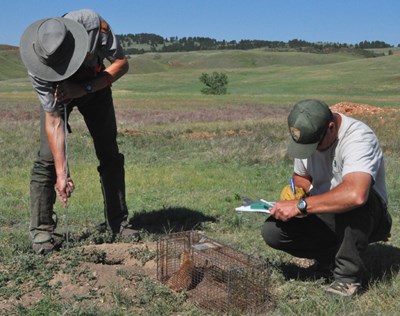
NPS Photo.
The National Park Service uses these guiding principles to help determine when a disease should or should not be managed within a wild animal population or community. To the extent possible, natural processes are relied upon to maintain native animal species and to influence natural fluctuations in their populations over time. However, it is recognized that human activities have altered the landscape and affected natural processes and functions even in the most remote areas. If additional information is needed after considering the following questions, the National Environmental Policy Act (NEPA) is used to evaluate potential alternatives and garner public input.
- Is the disease native or exotic?
- If the disease-causing organism is native to the area, has evolved with the host and its relationship with the host population is functioning naturally, the disease and its host will generally be left unmanaged. If the pathogen was introduced or its occurrence or dynamics with its host were altered as a result of human influence or unnatural conditions, then it may be managed.
- Is management of the disease prudent and feasible? If yes, the disease may be managed if:
- The disease is a threat to human health.
- The disease poses a risk to threatened or endangered species..
- The disease threatens areas outside of the park.
Last updated: January 4, 2017
